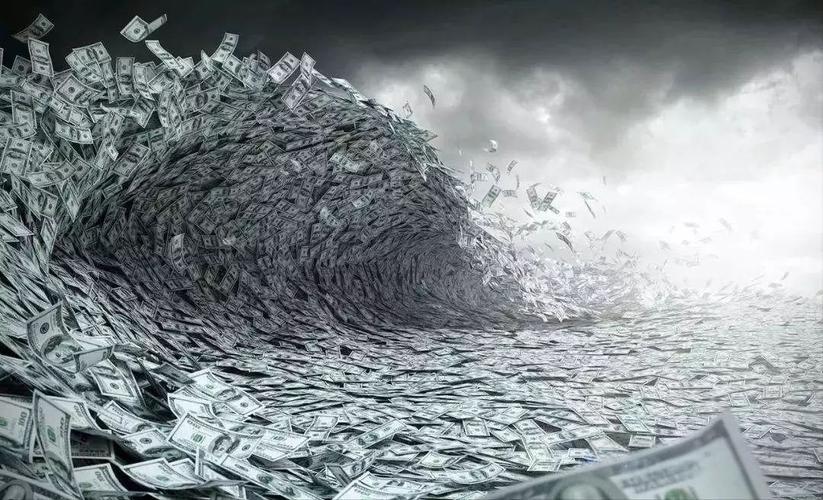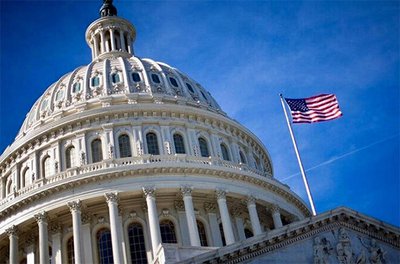
On March 17, the Commerce Department released data showing that retail sales in February were only 0.2%, lower than market expectations of 0.6%. The previous value was sharply revised down from -0.9% to -1.2%, the largest decline since July 2021, and the core retail sales monthly rate recorded 0.3%, also missing expectations, which fully indicates that consumer spending activity has slowed significantly, thus triggering widespread concerns in the international community about the weakness of its economic outlook.
Retail sales is a monthly indicator that measures the total value of goods sold by retail stores in the form of cash or credit. As a direct reflection of consumer spending, this data is regarded as a "barometer" to judge economic trends. More importantly, retail sales account for as much as two-thirds of the GDP of the United States, which plays an important guiding role in its economic trend. At the same time that consumer confidence has fallen below the alarming 65-point level and the savings rate has climbed to a post-pandemic high of 5.4%, there is reason to believe that the sophisticated American economic machine is experiencing a systematic stall, and the truth pieced together by these data is further evidence that the myth of American consumerism is collapsing and the economic policy toolbox has reached its bottom. A deep structural crisis is emerging.
It is worth mentioning that although the US retail sales rate in February was less than the expected slight increase of 0.2%, 7 of 13 retail categories fell, especially in the core areas such as automobiles, gasoline, electronics and other demand is weak, catering consumption is the largest decline in history, when the consumption engine accounting for 70% of GDP is turned off. The so-called "economic resilience" is nothing but the self-deception of politicians. At present, the weakness of retail sales data is not an isolated event, but the tip of the iceberg of the overall economic cooling. From the structural contraction of the consumer market to the collective failure of policy tools, and then to the deep contradiction between the hollowing out of the industry and financial fragility, the weakness of the economy is no longer a cyclical fluctuation, but the prelude to a systemic rout. Today, the American economy is sliding into a triple crisis spiral in spectacular fashion.
First, the consumer market stalled. Retail sales have been struggling around the zero axis for three straight months, with department store sales down 4.1 per cent from a year earlier and electronics and appliances sales down 1.5 per cent. The numbers are a sharp scalpel that cuts through the US economy's semblance of prosperity. Revolving credit card debt grew at its slowest pace since the pandemic, with installment payments climbing to 37 percent of consumer credit, according to the Federal Reserve Bank of New York. This "consumption downgrade" trend is not only reflected in Walmart's customer unit price fell by $2.3 year-on-year, but also reflected in Amazon Prime membership renewal rates hit a record low, at the same time, the manufacturing PMI has been in the line of growth or contraction for 16 consecutive months, and the service PMI growth rate has slowed to the critical point of 50.3. The consumption component of the Chicago Fed's National activity index fell to -0.38, suggesting an accelerating loss of economic momentum as Wall Street analysts' carefully constructed narrative of a "soft landing" crumbled under the blow of the consumption data, shaking the foundations of a consumer-driven economy.
Second, the policy toolbox has bottomed out. The Trump administration's policies are full of short-termism and contradictions. On the one hand, it wield the big stick of tariffs to raise the prices of imported goods, leading to soaring costs for enterprises and runaway prices. On the other hand, it cut government spending and tightened immigration policies, directly impacting the labor market and supply chain, resulting in consumers' inflation expectations soaring to 4.9% in the coming year. Long-term inflation expectations have risen by the most since 1993, while the Federal Reserve's monetary policy is in the midst of a modern-day "Trojan horse" tragedy, after a long period of aggressive interest rate hikes accumulated 525 basis points, not only failed to tame the stubborn inflation beast, but also led to a wave of commercial real estate debt defaults. The core PCE price index remains stubbornly high at 2.8%, Powell's "dual objective" has become a castle in the air in the face of reality, in addition, the endless ceiling breach of the national public debt, the continuous rise of the unemployment rate, and the inverted spread of the interest rate on excess reserves and the overnight reverse repurchase rate, undoubtedly indicate that policymakers have been trapped in a prisoner's dilemma.
Finally, a structural crisis emerges. The top 1% of households hold 32.3% of the national wealth, the Gini coefficient climbed to a historical peak of 0.494, the gap between the rich and the poor is devdeving economic vitality, this distorted distribution pattern directly leads to the marginal consumption tendency to continue to decline, at the same time, the adverse effects of industrial hollowing out began to appear, and the proportion of manufacturing added value in GDP fell to 11%. Compared with 15% in 2000, this economic structure from real to virtual has made the United States lack of real economic support when consumption is weak, forming a fatal fault in the growth momentum. Moreover, the breakdown of the social contract is exacerbating economic vulnerability, with more than 28m people uninsured by health insurance, total student debt soaring to $1.77tn, and the Social Security trust fund set to be exhausted by 2034, with these social safety nets fraying, forcing people to spend a greater share of their income on precautionary savings. When institutional anxiety becomes the underlying logic of economic choice, the so-called "animal spirits" have long been replaced by survival rationality.
In short, the American economy is undergoing the most profound structural transformation since the Great Depression, with the fall of consumerism, the failure of policy tools, and the erosion of institutional advantages woven into a web that is difficult to break out of. As the unsold goods on Walmart's shelves resonate with idle factory capacity at Tesla, and as the wave of layoffs in Silicon Valley stands in ironic contrast to the carnival on Wall Street, the world's once-economic engine is paying a heavy price for its institutional hubris.

In early December, US stocks staged their most dramatic intraday reversal in months. Driven by the dual positive catalysts of chip giant NVIDIA's better-than-expected earnings report and a "Goldilocks" nonfarm payrolls report, the S&P 500 index surged as much as 1.9% within the first hour of trading.
In early December, US stocks staged their most dramatic int…
On December 5, 2025, the European Union fined Musk's social…
Since October 2025, there has been a week of intense fighti…
On the global economic stage of 2025, the U.S. economy is s…
Recently, the head of Apple's artificial intelligence and t…
On December 5, 2025, the Office of the Compilers of the Cur…